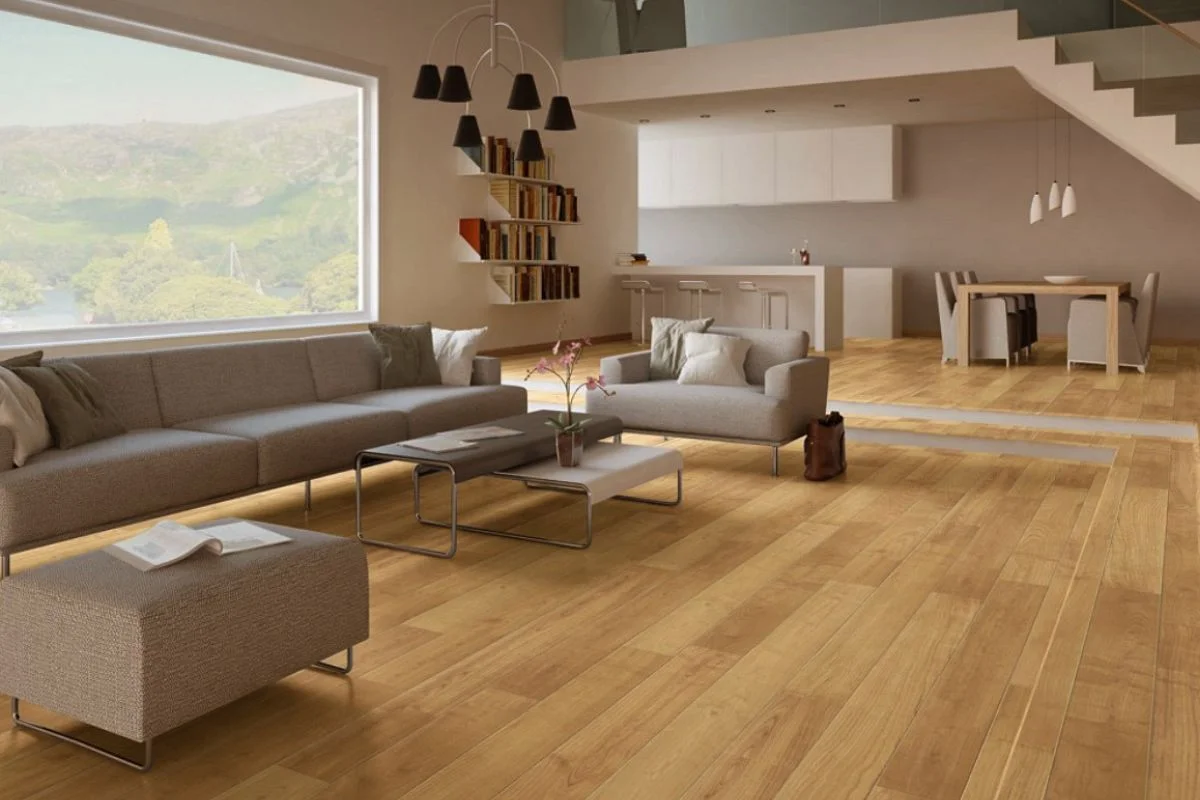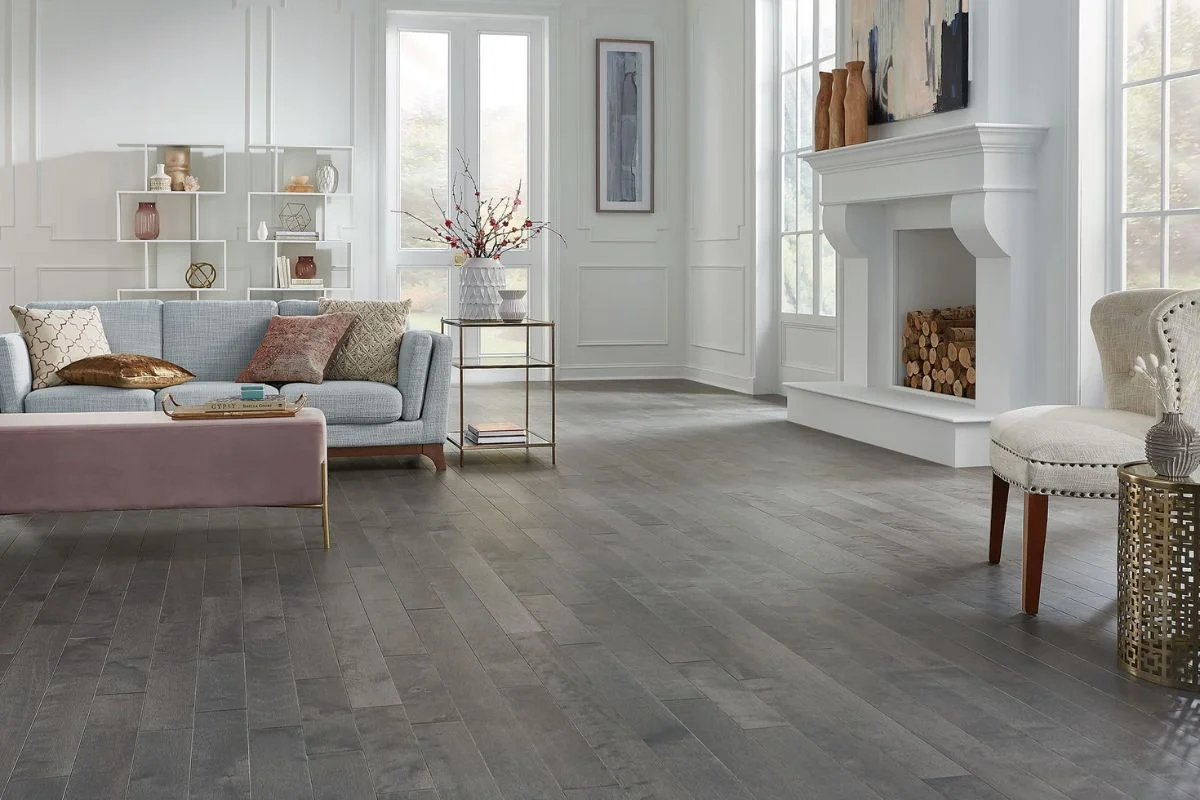Exploring the Advantages of Laminate Flooring: Beauty, Durability, and Affordability
Laminate flooring has emerged as a popular choice for homeowners and designers seeking a beautiful, durable, and affordable flooring solution. With its wide range of designs, exceptional durability, and budget-friendly price point, laminate flooring offers a host of advantages that make it an attractive option for any space.
In this exploration of the advantages of laminate flooring, we delve into the beauty, durability, and affordability that make this flooring option stand out. From its ability to mimic the look of natural materials like hardwood and stone to its resistance to scratches, stains, and fading, laminate flooring offers both aesthetic appeal and practical functionality.
Join us as we uncover the many benefits of laminate flooring and discover why it has become a popular choice for homeowners and designers alike. Whether you’re renovating your home, updating a commercial space, or simply seeking a stylish and practical flooring solution, laminate flooring offers a winning combination of beauty, durability, and affordability that is hard to beat.
Brief overview of laminate flooring
Introduction: Laminate flooring is a popular and versatile flooring option known for its durability, affordability, and ease of installation. Made of multiple layers bonded together, laminate flooring typically consists of a high-density fiberboard core, a photographic layer that mimics the look of wood, stone, or tile, and a protective top layer that provides resistance to scratches, stains, and wear. This synthetic flooring material has gained widespread popularity due to its ability to replicate the appearance of natural materials while offering greater resilience and lower maintenance requirements. In this article, we’ll provide a brief overview of laminate flooring, exploring its composition, benefits, and applications in both residential and commercial settings. Join us as we delve into the world of laminate flooring and discover why it continues to be a top choice for flooring projects worldwide.
Importance of Laminate Flooring choices in interior design
The importance of laminate flooring choices in interior design cannot be overstated, as flooring plays a crucial role in shaping the overall aesthetic and functionality of a space. Here are several reasons why laminate flooring choices are significant in interior design:
Versatility: Laminate flooring offers a wide range of design options, including various colors, patterns, and textures. This versatility allows homeowners and designers to achieve their desired aesthetic, whether it’s a rustic farmhouse style or a sleek modern look.
Affordability: Compared to other flooring materials like hardwood or natural stone, laminate flooring is more budget-friendly. This affordability makes it accessible to a broader range of homeowners and allows for more extensive flooring projects within budget constraints.
Durability: Laminate flooring is known for its durability and resistance to scratches, stains, and wear. This makes it an ideal choice for high-traffic areas such as living rooms, kitchens, and hallways, where durability is paramount.
Ease of Installation: Laminate flooring is relatively easy to install, especially compared to materials like hardwood or tile. Many laminate flooring options feature a click-lock or tongue-and-groove installation system, allowing for straightforward DIY installation or faster professional installation.
Maintenance: Laminate flooring requires minimal maintenance compared to natural materials like hardwood or stone. Regular sweeping or vacuuming and occasional mopping with a damp cloth are usually sufficient to keep laminate flooring clean and well-maintained.
Consistency: Laminate flooring offers consistent color and pattern options, allowing for a uniform look throughout a space. This consistency helps create a cohesive design aesthetic and enhances the overall visual appeal of the room.
Environmental Considerations: Many laminate flooring products are made from recycled materials and are recyclable themselves, making them a sustainable choice for environmentally-conscious homeowners. Additionally, laminate flooring manufacturing processes often use fewer natural resources compared to other flooring materials.
Compatibility with Underfloor Heating: Laminate flooring is compatible with underfloor heating systems, providing added comfort and warmth, especially in colder climates. This compatibility enhances the overall comfort and usability of a space.
Benefits of Laminate Flooring
Laminate flooring offers a multitude of benefits that make it a popular choice for homeowners and designers alike. Here are several key advantages:
Durability: Laminate flooring is highly durable and resistant to scratches, dents, and stains. Its protective wear layer helps shield the surface from everyday wear and tear, making it ideal for high-traffic areas in the home.
Affordability: One of the primary benefits of laminate flooring is its affordability compared to other flooring options like hardwood or tile. Laminate flooring provides a cost-effective way to achieve the look of natural materials without breaking the bank.
Versatility: Laminate flooring comes in a wide range of colors, patterns, and styles, allowing for versatile design options. Whether you prefer the look of wood, stone, or tile, there’s a laminate flooring option to suit your taste and aesthetic preferences.
Ease of Installation: Installing laminate flooring is relatively easy, especially compared to other types of flooring. Many laminate flooring products feature a click-lock or tongue-and-groove installation system, allowing for quick and hassle-free installation, even for DIY enthusiasts.
Low Maintenance: Laminate flooring is easy to clean and requires minimal maintenance to keep it looking its best. Regular sweeping or vacuuming, along with occasional mopping with a damp cloth, is typically all that’s needed to maintain the appearance of laminate flooring.
Resistance to Moisture: While not completely waterproof, laminate flooring is resistant to moisture and can withstand spills and splashes without warping or damage. This makes it suitable for use in kitchens, bathrooms, and other areas prone to moisture.
Hypoallergenic: Unlike carpeting, which can trap dust, pet dander, and allergens, laminate flooring provides a hypoallergenic surface that is easy to clean and maintain. This makes it an excellent choice for households with allergy sufferers or pets.
Environmentally Friendly: Many laminate flooring products are made from sustainable materials and are recyclable, making them an environmentally friendly flooring option. Additionally, laminate flooring manufacturing processes often use fewer natural resources compared to other types of flooring.
Types of Laminate Flooring
Laminate flooring comes in several types, each offering unique characteristics and advantages. Here are the most common types of laminate flooring:
Traditional Laminate Planks: Traditional laminate flooring consists of individual planks that are installed side by side to create a wood-like appearance. These planks typically feature a wood grain pattern and are available in various widths, lengths, and thicknesses.
Wide Plank Laminate Flooring: Wide plank laminate flooring features wider and longer planks compared to traditional laminate flooring. This type of laminate flooring creates a more spacious and modern look, resembling the appearance of real hardwood flooring.
Embossed Laminate Flooring: Embossed laminate flooring has a textured surface that mimics the look and feel of natural materials such as wood or stone. The embossing adds depth and dimension to the flooring, enhancing its visual appeal and realism.
High-Gloss Laminate Flooring: High-gloss laminate flooring has a shiny, reflective surface that adds a luxurious and contemporary look to any space. This type of laminate flooring is highly durable and resistant to scratches and stains, making it suitable for high-traffic areas.
Water-Resistant Laminate Flooring: Water-resistant laminate flooring is specially designed to withstand moisture and spills without warping or damage. It features a moisture-resistant core and protective top layer, making it ideal for use in kitchens, bathrooms, and other areas prone to moisture.
Comparing Laminate Flooring with Other Materials
When considering flooring options for your home or commercial space, it’s essential to compare laminate flooring with other materials to make an informed decision. Here’s a comparison of laminate flooring with some common alternatives:
Laminate Flooring vs. Hardwood Flooring:
- Durability: Laminate flooring is generally more durable and resistant to scratches, dents, and moisture compared to hardwood flooring.
- Cost: Laminate flooring is typically more affordable than hardwood flooring, making it a budget-friendly option for homeowners.
- Installation: Laminate flooring is easier to install than hardwood flooring, often featuring a click-lock or tongue-and-groove installation system that allows for DIY installation.
- Maintenance: Laminate flooring requires less maintenance than hardwood flooring, as it is easier to clean and less prone to damage from spills and stains.
Laminate Flooring vs. Vinyl Flooring:
- Durability: Both laminate and vinyl flooring are durable options, but laminate flooring tends to be more scratch-resistant, while vinyl flooring is more resistant to moisture.
- Appearance: Laminate flooring often mimics the look of hardwood or natural stone, providing a more realistic appearance compared to vinyl flooring.
- Installation: Laminate flooring and vinyl flooring are both relatively easy to install, but laminate flooring may have a slight edge in terms of ease of installation for DIY projects.
- Comfort: Laminate flooring offers more cushioning underfoot compared to vinyl flooring, making it more comfortable to walk on for extended periods.
Laminate Flooring vs. Tile Flooring:
- Durability: Both laminate and tile flooring are durable options, but tile flooring may be more resistant to moisture and damage from heavy objects.
- Appearance: Laminate flooring often mimics the look of natural materials like wood or stone, while tile flooring offers a wider range of design options, including various colors, patterns, and textures.
- Installation: Tile flooring requires more labor-intensive installation compared to laminate flooring, as it involves grouting and sealing. Laminate flooring is typically easier and faster to install.
- Maintenance: Laminate flooring is easier to clean and maintain compared to tile flooring, as it does not require sealing or regrouting to maintain its appearance.
Maintaining and Cleaning Laminate Flooring
Proper maintenance and cleaning are essential to keep laminate flooring looking its best and prolong its lifespan. Here are some tips for maintaining and cleaning laminate flooring:
Regular Sweeping or Vacuuming: Sweep or vacuum the laminate flooring regularly to remove dirt, dust, and debris. Use a soft-bristle broom or a vacuum cleaner with a brush attachment to avoid scratching the surface.
Mopping with a Damp Cloth: For routine cleaning, dampen a microfiber cloth or mop with water and a mild detergent solution. Avoid using excessive water, as moisture can damage laminate flooring. Wring out the mop thoroughly to ensure it’s only damp, not soaking wet.
Avoid Harsh Chemicals: Avoid using abrasive cleaners, harsh chemicals, or oil-based products on laminate flooring, as they can damage the surface. Stick to mild detergents or cleaners specifically formulated for laminate flooring.
Spot Cleaning Spills Immediately: Promptly clean up spills and stains using a damp cloth or sponge. Avoid allowing spills to sit on the laminate flooring for an extended period, as they can cause damage or discoloration.
Use Protective Mats or Rugs: Place protective mats or rugs at entryways, in front of sinks, and in high-traffic areas to prevent dirt, moisture, and debris from being tracked onto the laminate flooring. This helps minimize wear and tear and reduces the need for frequent cleaning.
Avoid Sharp Objects: Avoid dragging heavy furniture or sharp objects across the laminate flooring, as they can cause scratches or gouges. Use furniture pads or coasters to protect the surface from damage.
Preventative Maintenance: Periodically inspect the laminate flooring for any signs of damage, such as scratches, chips, or gaps between planks. Address any issues promptly to prevent further damage and maintain the integrity of the flooring.
Use Caution with Steam Cleaners: While some manufacturers may recommend using steam cleaners on laminate flooring, it’s essential to use caution and follow the manufacturer’s guidelines. Excessive moisture from steam cleaners can damage laminate flooring, so use them sparingly and ensure the flooring is properly sealed.
Dry Mopping for Dust and Pet Hair: Use a dry mop or microfiber cloth to remove dust, pet hair, and other debris from the laminate flooring between cleanings. Dry mopping helps maintain the cleanliness of the flooring without the need for water or cleaning solutions.
Conclusion
In conclusion, maintaining and cleaning laminate flooring is essential to preserve its appearance, durability, and longevity. By following the proper maintenance and cleaning tips outlined in this article, you can keep your laminate flooring looking clean, fresh, and beautiful for years to come.





0 comments